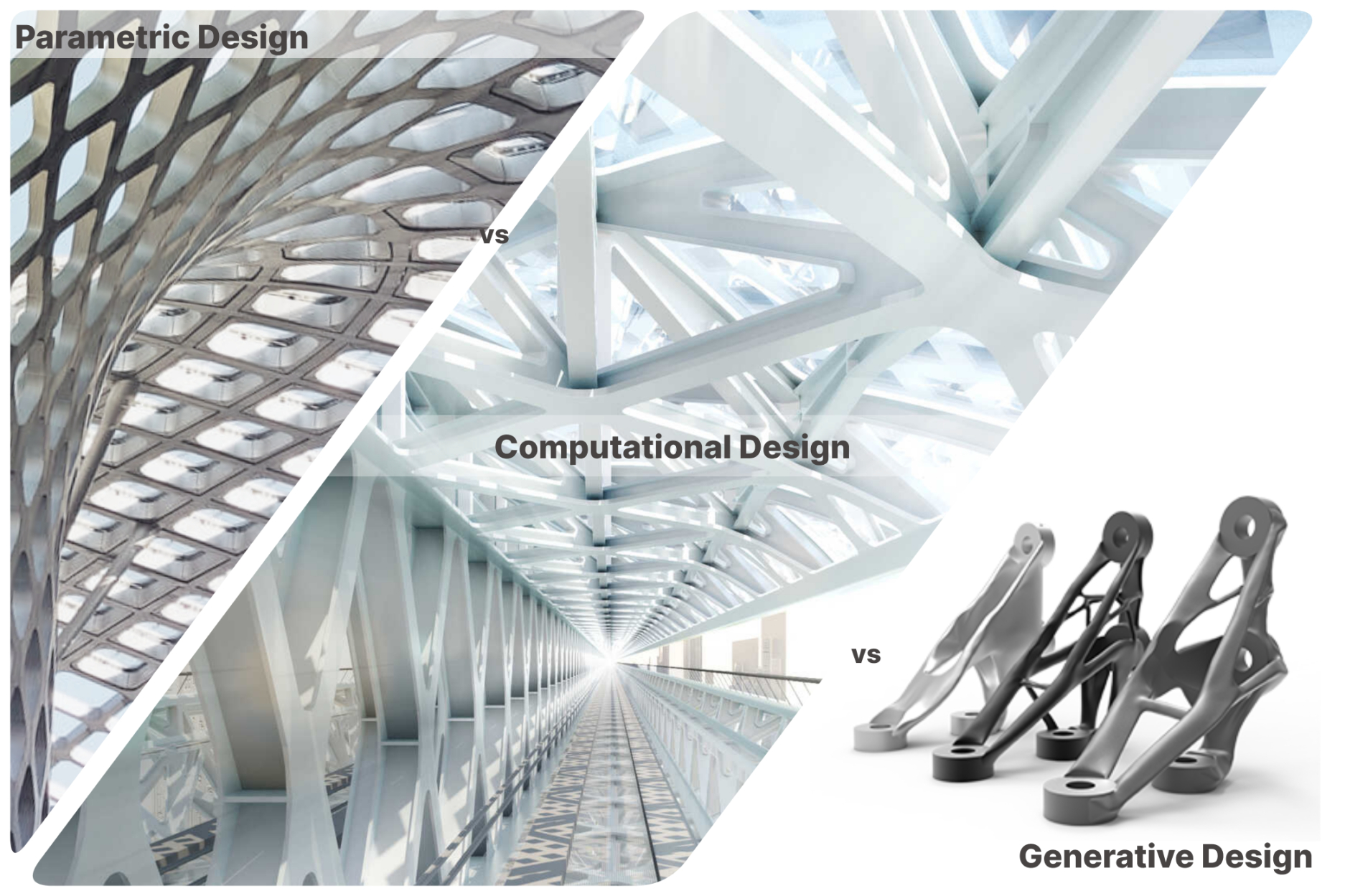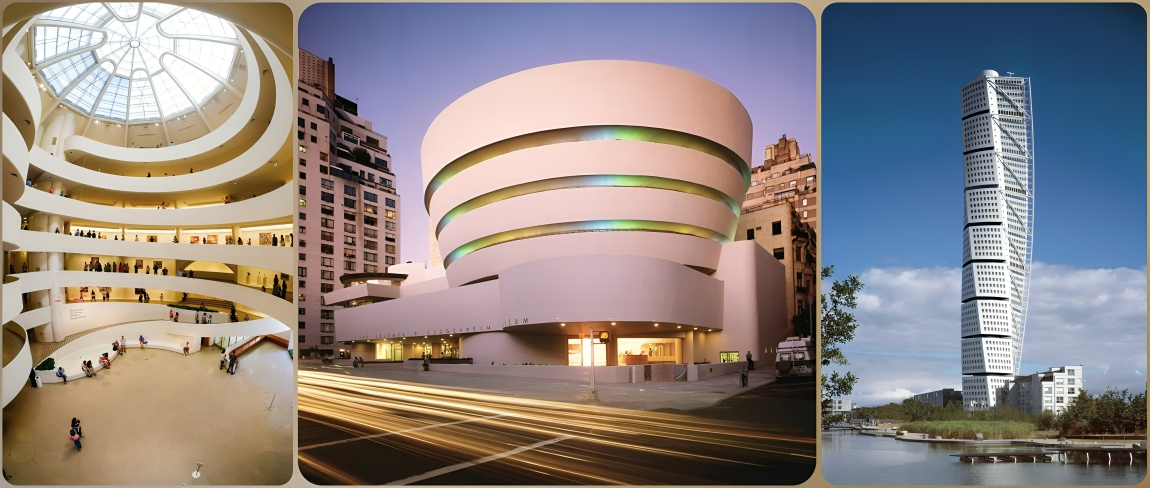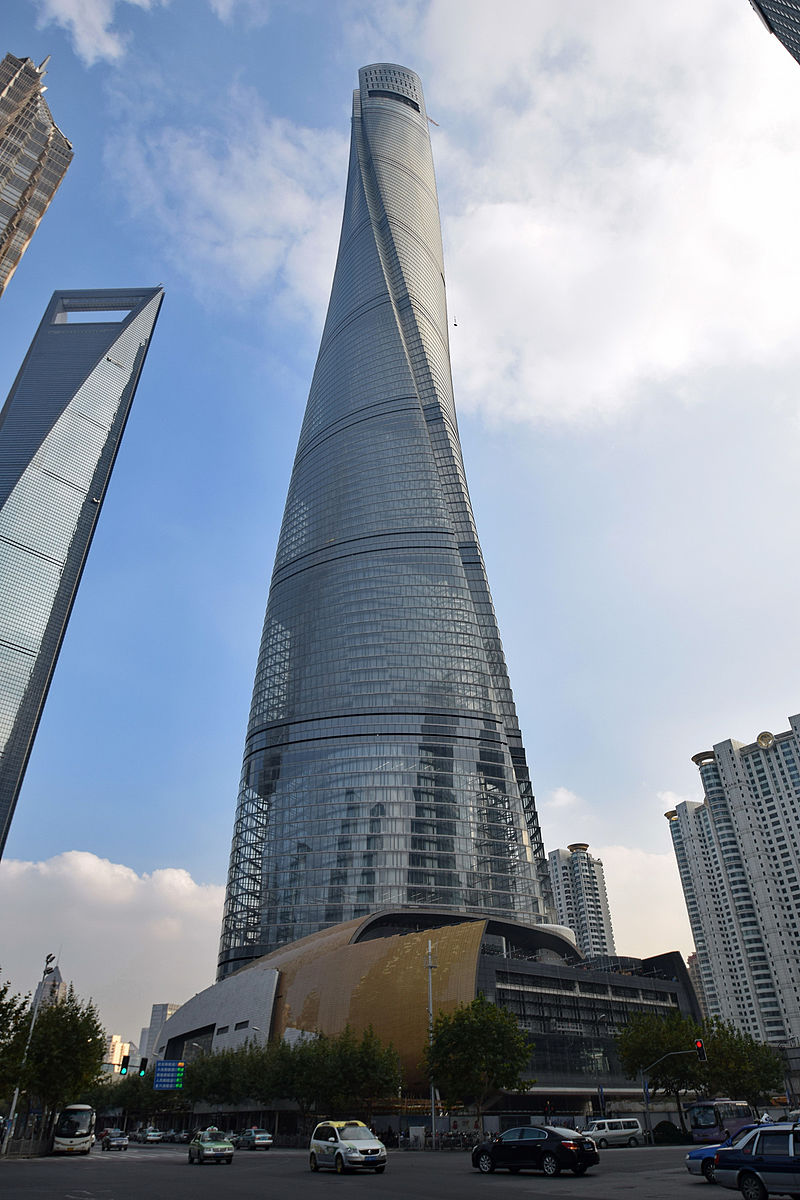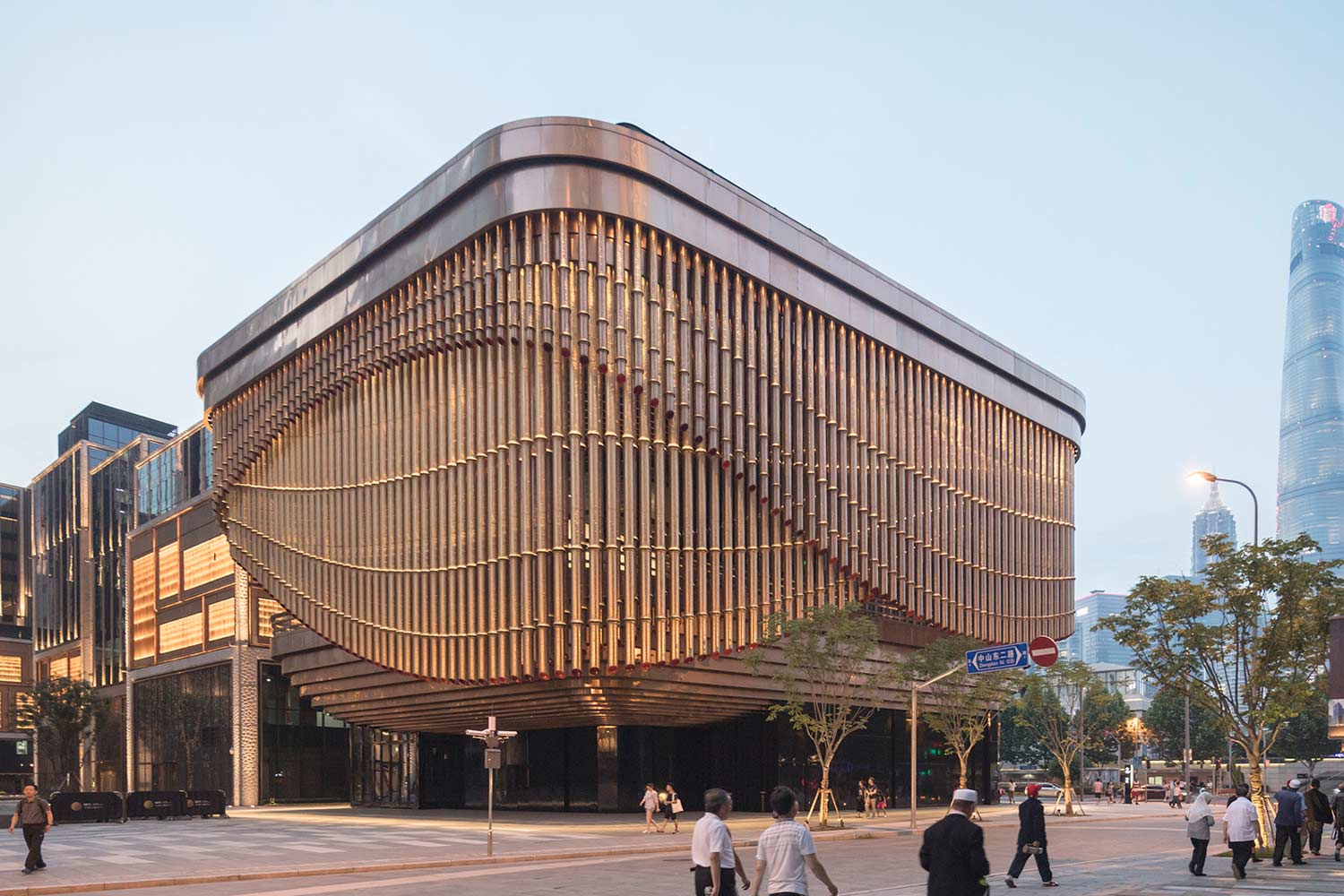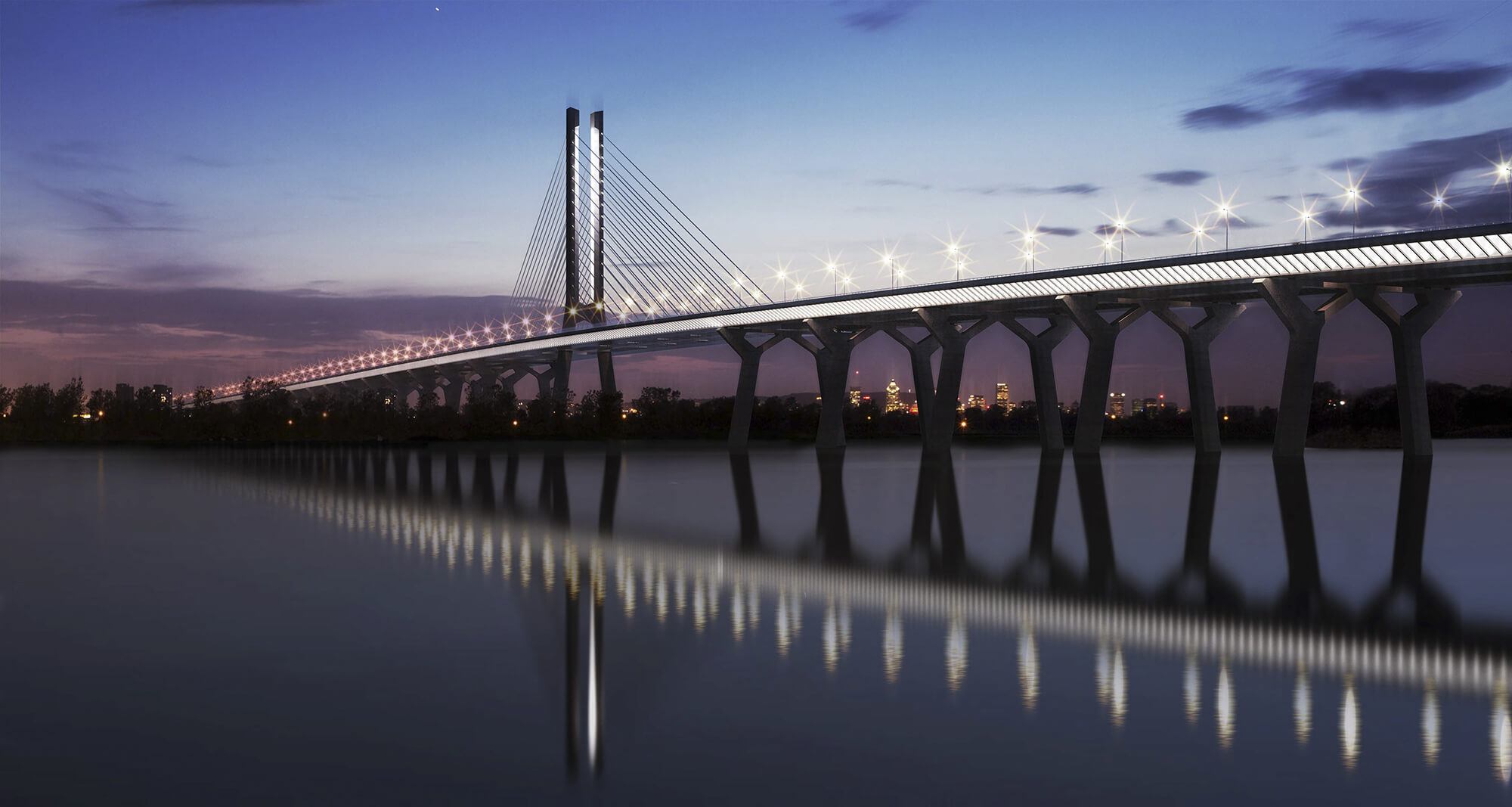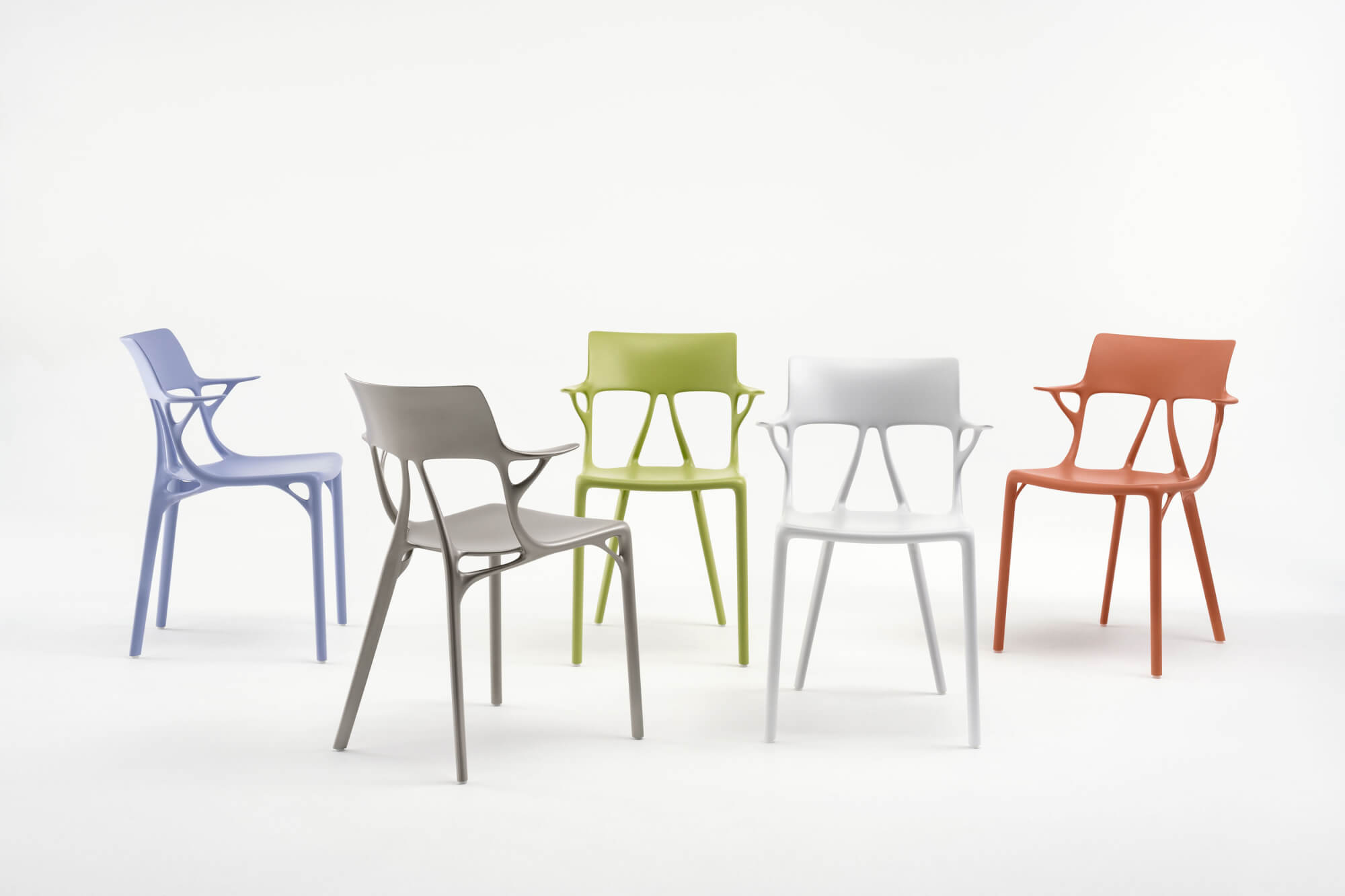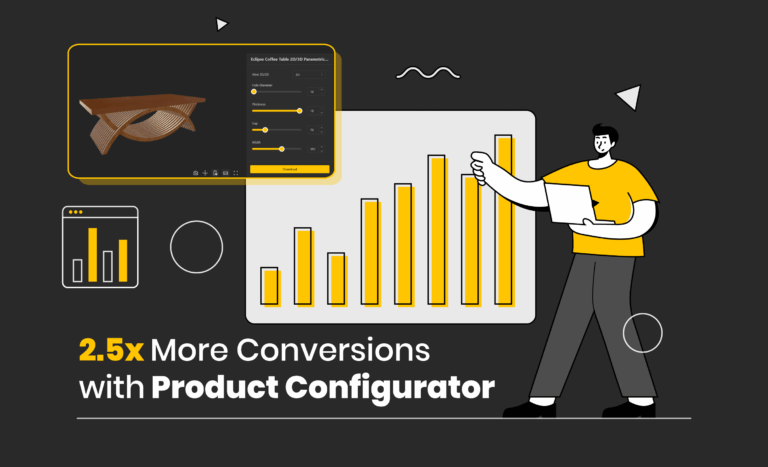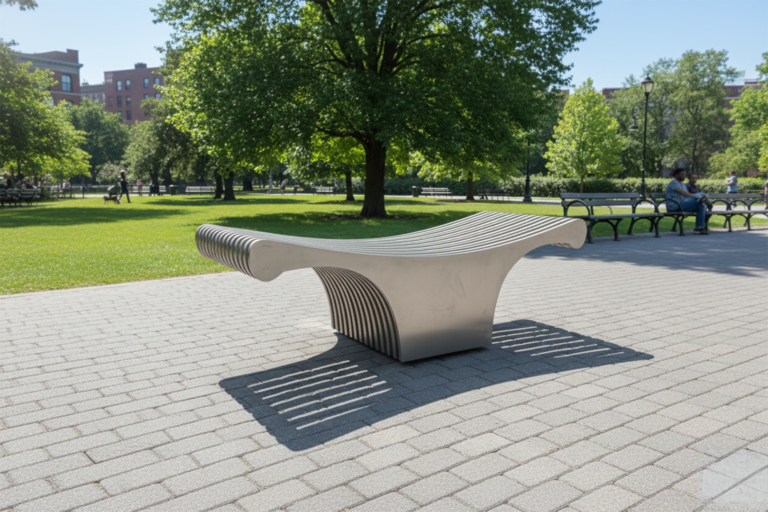Table of Contents
Imagine walking into a modern art museum where every curve of the building seems to defy gravity, the light filters through the windows in just the right way, and the layout feels intuitively perfect. You might be in a space like the Guggenheim Museum in New York. Or imagine standing in front of the twisting, gleaming form of the Turning Torso in Malmö, Sweden. These buildings don’t just stand—they move, twist, and breathe as if they were living organisms. These are buildings that are more than just functional; they are masterpieces of design. But have you ever wondered how such complex and innovative structures come to life?
Behind these iconic designs are advanced methodologies like parametric, computational, and generative design. These techniques are reshaping how architects, designers, and engineers think about creating everything from buildings to products. We often label building designs like these as ‘parametric’ or ‘computational,’ with even professionals sometimes using the terms interchangeably. This has led to a fair amount of confusion about what these concepts actually mean. Let’s break down these design approaches to gain a clearer understanding of the differences.
1. Overview of Design Methodologies
Before diving into the specifics, let’s define the three design approaches:
Parametric Design: Parametric design is centered around the use of parameters—key variables that define and control the geometry and characteristics of a design. By adjusting these parameters, designers can quickly explore a wide range of possibilities, making the design process highly flexible and adaptable. The relationships between these parameters are established at the outset, ensuring that any changes made are consistently applied across the entire design.
Computational Design: Computational design takes a more algorithmic approach, leveraging the power of computation to address design challenges. In this methodology, designers use scripts or coding to develop algorithms that can generate and optimize complex forms or structures. These algorithms allow for the automation of repetitive tasks, the creation of intricate geometries that would be difficult to achieve manually, and the optimization of designs based on specific criteria, such as structural integrity or material efficiency. Computational design is especially valuable in scenarios where precise calculations and complex data processing are required to arrive at the best possible solution.
Generative Design: Generative design pushes the boundaries of creativity by using algorithms to explore a vast array of potential design solutions. This approach is inherently iterative—designers input specific goals and constraints, such as material limits, performance requirements, or aesthetic preferences, and the software generates multiple design variations that meet these criteria. The designer can then evaluate these options, selecting the most promising ones for further refinement. Generative design is particularly effective in discovering innovative solutions that might not be immediately apparent through traditional design methods, as it harnesses computational power to explore a broader spectrum of possibilities.
| Aspect | Computational Design | Generative Design | Parametric Design |
| Focus | Automation and problem-solving. | Exploring optimal solutions. | Flexibility and adaptability. |
| Applications | Architecture, simulations, product design. | Product design, architecture, structural optimization. | Architecture, industrial design, customizable designs. |
| Tools | Python, MATLAB, Rhino scripting. | Autodesk Generative Design, Grasshopper with Galapagos. | Grasshopper for Rhino, Dynamo for Revit. |
| Advantages | Efficiency, automation, complex problem-solving. | Explores vast design spaces, finds optimal solutions. | Dynamic, adaptable designs, handles complex geometries. |
| Challenges | Requires programming skills, can be complex and computationally heavy. | May generate too many options, relies on precise input constraints. | Requires deep understanding of parameter relationships. |
2. From Simple Curves to Complex Creations: Parametric Design
The architect starts by establishing the core parameters of the skyscraper: the height, the curvature of its facade, the materials available, and the load it must bear. The building’s form is critical—not just for aesthetics but also for how it will interact with the environment. This is where parametric design comes into play.
By adjusting these parameters, the architect can explore multiple design options efficiently. Want the skyscraper to have a gentle curve that captures more sunlight on its eastern face? The curvature parameter is fine-tuned. Need to reduce the use of glass without compromising the building’s natural light intake? The material parameter is tweaked. With parametric design, the architect can experiment with various forms and structures while ensuring that all elements remain coherent and interconnected.
A real-world application of this approach can be seen in the design of the One Thousand Museum in Miami, a 62 floor high residential building designed by Zaha Hadid Architects. The building’s unique exoskeleton was developed through parametric modeling, allowing the design team to manipulate the structure’s form and create a fluid, organic shape that is both structurally sound and visually captivating.
3. Cracking the Code of Complexity: Computational design
As the project progresses, the architect faces another challenge: ensuring the skyscraper’s structural integrity in a region prone to high winds and earthquakes. To meet this challenge, the architect turns to computational design.
Using computational methods, the architect writes algorithms that simulate various structural scenarios, such as how the skyscraper will respond to different wind forces or seismic activities. These simulations help the architect identify the most critical areas of the structure that need reinforcement. The algorithms run countless iterations, tweaking the design to find the optimal balance between safety, cost, and material efficiency.
This method was crucial in the design of the Shanghai Tower, one of the world’s tallest buildings. The tower’s twisting form wasn’t just an aesthetic choice; it was optimized using computational design to reduce wind loads by 24%, significantly lowering construction costs and material usage while enhancing the building’s stability in strong winds.
4. The Art of Possibility: Generative design
With the structural and aesthetic aspects in place, the architect now focuses on the skyscraper’s interior spaces, particularly the layout of office floors. The goal is to maximize natural light, create flexible workspaces, and minimize energy consumption. For this, the architect turns to generative design.
In generative design, the architect inputs specific goals—such as maximizing daylight penetration, ensuring ergonomic workspace distribution, and reducing energy use. The software then generates thousands of potential layout configurations, each one exploring a different combination of these factors. The architect reviews the most promising designs, refining them to ensure they meet all functional and aesthetic requirements.
A similar approach was used by Autodesk in designing the new Toronto office of MaRS Discovery District. The generative design process created an office layout that optimized natural light distribution and energy efficiency, resulting in a workspace that is both inspiring and sustainable.
5. Connecting the Dots: The Key Differences
As we’ve explored, parametric, computational, and generative design approaches each offer unique advantages and methods for solving design challenges.
Parametric Design is like adjusting the dials on a machine. You set the parameters, and the design shifts and changes according to your input. It’s flexible and powerful, but ultimately you’re still steering the ship.
Computational Design takes things a step further by bringing in algorithms to solve complex problems. It’s about using the power of computation to optimize and perfect a design, often handling challenges that are too complex for the human brain to fully grasp on its own.
Generative Design is like letting an artist and a scientist collaborate. You set the goals and constraints, and then let the software explore a world of possibilities, coming up with solutions that might never have occurred to a human designer.
6. Applications and Use Cases
Parametric Design: Often used in architecture to create customizable, dynamic forms. For instance, the façade of a building could be designed parametrically to respond to environmental factors like sunlight and wind.
Computational Design: Commonly applied in structural engineering and architecture. A bridge, for example, could be optimized for minimal material use while maintaining structural integrity through computational methods.
Generative Design: Extensively used in product design and architecture. For instance, a company might use generative design to create a chair that is lightweight, aesthetically pleasing, and structurally sound, exploring thousands of possible configurations.
7. Future Trends and Developments
As technology advances, these design methodologies will continue to evolve:
- Integration with AI: Generative design, in particular, is expected to see greater integration with AI, leading to even more sophisticated and optimized design solutions.
- Increased Automation: Computational design will likely benefit from increased automation, making it more accessible to designers without extensive coding knowledge.
- Sustainability: All three methodologies are poised to play a critical role in sustainable design practices, helping designers create more efficient, eco-friendly structures and products.
8. Conclusion
Understanding the differences between parametric, computational, and generative design is crucial for anyone involved in modern design practices. Each methodology offers unique advantages and can be applied to a variety of fields, from architecture to product design. By exploring and experimenting with these approaches, designers can unlock new levels of creativity and efficiency, staying ahead in a rapidly evolving industry.


